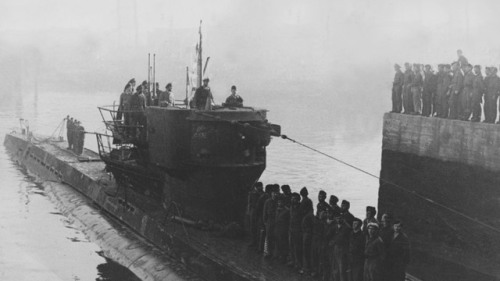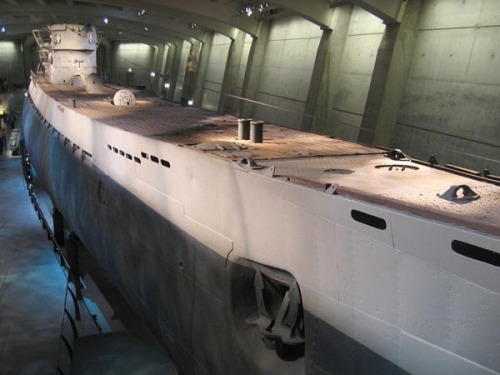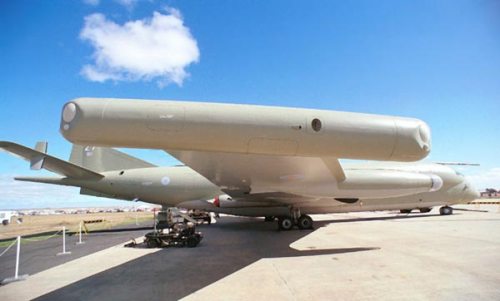
Israel’s growing security needs and recent moves is drawing harsh conclusions and asking difficult questions. Growing security concerns – dealing with Iran nuclear power, growing arsenal of Hamas and hizbollah, recent over throw of Egypt’s hosni Mubarak-1979 peace treaty between Israel and Egypt.
Furthermore, Arrival of Iranian war ships in Mediterranean since 1979, has sowed signs of Tehran’s determination to expand it’s influence within the Mediterranean region.
Recently Israel Air force has ordered 20 American F-35 fighter jets most advanced jets, navy will receive two new submarines, and Israel pouring money into missile defence systems (with Arrow 3 on it’s way) and spurring up the land force capabilities.
In years in israelis the army has lost some of it’s lustre after a string of scandals involving it’s leaders (example of some incidents major of all was the Attack on gaza aid flotilla. Some argue the threat today to israel is not invasion or battlefield defeat instead it’s a long term erosion of Israel legitimacy
Combination of conventional and non conventional warfare, new approach combination of political and military elements has made Israel to think differently which is forcing the nation to think aggressively. Military personnel are constantly engaged in deep thoughts and argument to extend military power within the region to address the nature of war Israel is about to face. So what exactly is in those mind, may be the following:
– Estimate of hizbollah’s rocket arsenal
– their target strength and Israel cities
– fighting a weak for far too long
– what is there to loose and to gain
– IDF room of manoeuvre is shrinking (fighting against weak)
So how effective is this fighter jets and submarines contracts If the threat is to the cities? One thing to look in things contracts and extent of Israel’s military budget is best taken by Comparing the military spending of Israel against it’s neighbours Egypt, Syria, Jordan, Iran lebanon. Best here is too have an Insight into the politics and the military -sheer number of former military leaders in politics, you will be surprised by the inclusion of high profile military officers in what’s called a typical civilian Market.
The Israel Navy is making advanced preparations to absorb two new German-made Dolphin-class submarines, IDF journal Bamachaneh reported in its latest issue. The number of soldiers selected for submarine warfare has grown by 30% in the latest IDF recruitment batches, in order to man the additional submarines.
The Navy currently has three submarines, also of the Dolphin class, so the addition of two subs means that the force is growing 66% bigger. “We are in mid-process and are slowly adding more crews to be trained for service in the submarines,” explained Naval Instruction Base Commander Col. Ronen Nimni. “We are also taking care to add crew commanders who closely mentor the soldiers.”
More officers are being trained for submarine posts as well. The number of cadets who will be trained for submarine command positions is rising by 35%.
“The missiles, part of Israel’s estimated 100-strong nuclear arsenal, reportedly have a range of up to 800 miles. The subs probably cannot hit Iran without passing through the Suez into the Red Sea and ultimately the Indian Ocean. The Red Sea is also the best route to the Gulf of Oman, where Israeli ships and submarines might enforce a blockade of Iran, during wartime.”
In November 2005, it was announced that Germany would allow the sale of two new Dolphin Class submarines to Israel. In July 2006, Israel placed a contract for two additional Dolphin submarines with an option on a third. The new submarines will have air-independent propulsion (AIP) systems, which allow them to stay submerged for a much longer period. Delivery of the first vessel is expected in 2012.
Dolphin Class Submarines
Based at Haifa, the Israeli Navy (IN) currently operates three modern, diesel-electric, Dolphin-class submarines. Two additional Dolphin-class submarines have also been ordered and are scheduled to be delivered before 2012. In December 2003, two of Israel’s three decommissioned Gal-class submarines arrived in Kiel for refits and modernization at Germany’s Howaldtswerke-Deutsche Werft. Although the original plan was to recommission the Gal-class, it was later decided to search for a potential buyer.
Israel in world’s Politics
Israel has never acknowledged publicly that it is a nuclear-weapons state, but it has also never signed the Nuclear Non-Proliferation Treaty (NPT). Now the Arabs, led by Egypt, are demanding that Israel do so or they will sabotage the future of the NPT regime
It is also abundantly clear that Israel’s nuclear capability has not kept its enemies from attacking. Iranian-backed terrorist groups Hezbollah in Lebanon and Hamas in Gaza and the West Bank have both fired rockets into Israel in two recent wars despite the country’s possession of nuclear weapons that could obliterate them all. This too is no surprise. Other atomic-weapons states, including America, have found that their nuclear deterrents do not prevent conventional war or terrorism. But they can prevent massive retaliation.
ISRAEL SEES its nuclear monopoly as a key factor in its security. Successive Israeli governments have thus ensured that no other state in the Middle East becomes nuclear armed.
The only exception to the rule is Pakistan—the one Muslim state which has developed a nuclear arsenal. But in this case we are talking about a geographically distant country, and one that has never participated in military operations against Israel. Islamabad developed its bomb primarily during the era of Mohammad Zia ul-Haq’s dictatorship in the 1980s, when it was closely allied with the United States and fighting the Soviets in Afghanistan. A. Q. Khan, the father of the Pakistani bomb, has claimed that Zia warned Israel that if it tried to interfere with Pakistan’s program he would destroy Tel Aviv. When Islamabad did test its bombs in 1998, it tried to argue that Israel was on the verge of attacking its nuclear facilities and the tests were in self-defense. The charade of blaming Israel fooled no one.
ISRAEL NOW faces the biggest-ever challenge to its monopoly on the bomb in the Middle East from Iran. For Israel, Tehran is a dangerous opponent, close and threatening. There is a virtually unanimous consensus in Israel that Iran cannot be allowed to acquire nuclear weapons. From left to right, Israelis see an existential threat to their very survival. Current Prime Minister Benjamin Netanyahu argued at the Brookings Institution’s Saban Forum in Jerusalem in 2007 that Iran is a “crazy,” even suicidal, state that will be prepared to sacrifice millions of its own citizens in a nuclear exchange with Israel.
It is clear from statements of Israeli military and intelligence officials and numerous press leaks that planning for a military operation to prevent Iran from acquiring nuclear weapons is well under way in Israel
It is certainly a challenging one. Distance alone makes Iran a much more difficult target than Iraq or Syria. The most direct route from Israel to Iran’s Natanz facility is roughly 1,750 kilometers across Jordan and Iraq. The alternatives via Turkish airspace (over 2,200 kilometers) or Saudi airspace (over 2,400 kilometers) would also put the attack force into the skies of American allies equipped with American fighter aircraft. Moreover, unlike Iraq and Syria, but like Pakistan, the Iranian program is dispersed throughout several facilities and sites around the country, some of which are underground and hardened
Iran will almost certainly retaliate against both U.S. and Israeli targets. To demonstrate its retaliatory prowess, Iran has already fired salvos of test missiles (some of which are capable of striking Israel), and Iranian leaders have warned they would respond to an attack by either Israel or the United States with attacks against Tel Aviv, U.S. ships and facilities in the Persian Gulf, and other targets. Even if Iran chooses to retaliate in less risky ways, it could respond indirectly by encouraging Hezbollah attacks against Israel and Shia militia attacks against U.S. forces in Iraq, as well as terrorist attacks against American and Israeli targets in the Middle East and beyond.
America’s greatest vulnerability would be in Afghanistan. Iran could easily increase its assistance to the Taliban and make the already-difficult Afghan mission much more complicated. Western Afghanistan is especially vulnerable to Iranian mischief, and NATO has few troops there to cover a vast area. President Obama would have to send more, not fewer, troops to fight that war.
Making matters worse, considering the likely violent ramifications, even a successful Israeli raid would only delay Iran’s nuclear program, not eliminate it entirely. In fact, some Israeli intelligence officials suspect that delay would only be a year or so. Thus the United States would still need a strategy to deal with the basic problem of Iran’s capabilities after an attack, but in a much more complicated diplomatic context since Tehran would be able to argue it was the victim of aggression and probably would renounce its NPT commitments. Support for the existing sanctions on Iran after a strike would likely evaporate.
Of course, Israel’s own nuclear arsenal should be sufficient to deter Iran, but an American nuclear guarantee would add an extra measure of assurance to Israelis. If the United States guarantees Israel a nuclear umbrella, then Iran knows no matter what damage it may inflict on Israel, Washington will be able to retaliate with overwhelming force. Iran would have no delivery system capable of striking back at the U.S. homeland. It would be the target of both whatever residual capability Israel retained and the vast American nuclear arsenal. That is a deterrent indeed.
Already the United States has been deeply involved in building Israel’s defense against an Iranian missile strike. For almost two decades the Pentagon has been working closely with Israel to perfect the Arrow anti-tactical ballistic-missile (ATBM) system. The two countries have shared extensive technology on the question of ATBMs, including integrating Israel into the most advanced American early-warning radar systems to provide the earliest possible alert of an incoming attack. This defensive cooperation should be continued and enhanced
How active USA needs to be?
The next step would be to ensure Israel has the delivery systems that would safeguard a second-strike capability. The F-15I probably already does so for the immediate future, but it is worth examining the wisdom of providing the F-22 stealth aircraft to the IDF as an even-more-sophisticated attack system that would be able to assure Israel’s deterrence far into the future. Prime Minister Barak raised this issue with President Clinton at the Camp David summit in 2000, and it too should be reexamined. We might look at providing Israel with advanced cruise-missile technology or even nuclear-powered submarines with missile capabilities to enhance its capacity to launch from platforms at sea.
THE ERA of Israel’s monopoly on nuclear weapons in the Middle East is probably coming to an end. Israel will still have a larger arsenal than any of its neighbors, including Iran, for years if not decades. It will face threats of terror and conventional attack, but it already faces those. With American help it can enhance its deterrence capabilities considerably. It has no reason to lose its self-confidence. But to avoid the potential for all-out war not only between Israel and Iran but also between the United States and the Islamic Republic, Washington needs to act now. Only by enhancing Israel’s nuclear capability will America be able to strongly and credibly deter an Israeli attack on Tehran’s facilities.
References
U.S. Central Intelligence Agency, Special National Intelligence Estimate: Prospects for Further Proliferation of Nuclear Weapons, SNIE Number 4-1-74, August 23, 1974, declassified DocID: 1472492.
This argument was made by the expert the London Sunday Times called in to debrief Vanunu, Frank Barnaby, in his book The Invisible Bomb: The Nuclear Arms Race in the Middle East (London: Taurus, 1989).
See Avi Shlaim, Lion Of Jordan: The Life of King Hussein in War and Peace (London: Penguin, 2007): 508.
Barton Gellman, “Israel Gave Key Help to UN Team in Iraq,” Washington Post, September 29, 1998.
Adaption (Bruce Riedel – a senior fellow in the Saban Center for Middle East Policy at the Brookings Institution. A career CIA officer, he has advised four presidents on Middle East and South Asian issues in the White House on the staff of the NSC.)



































